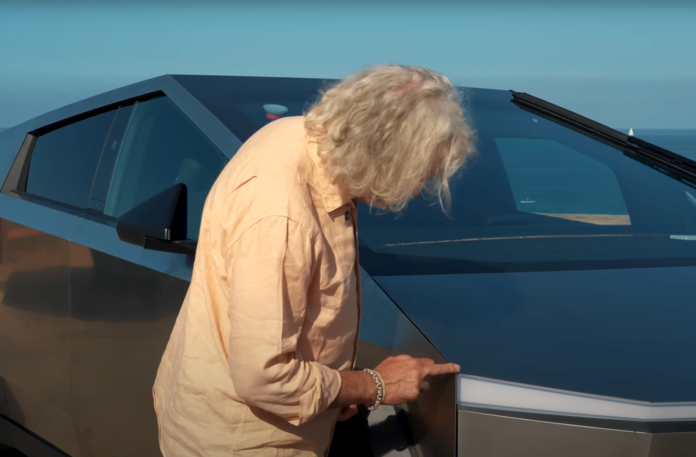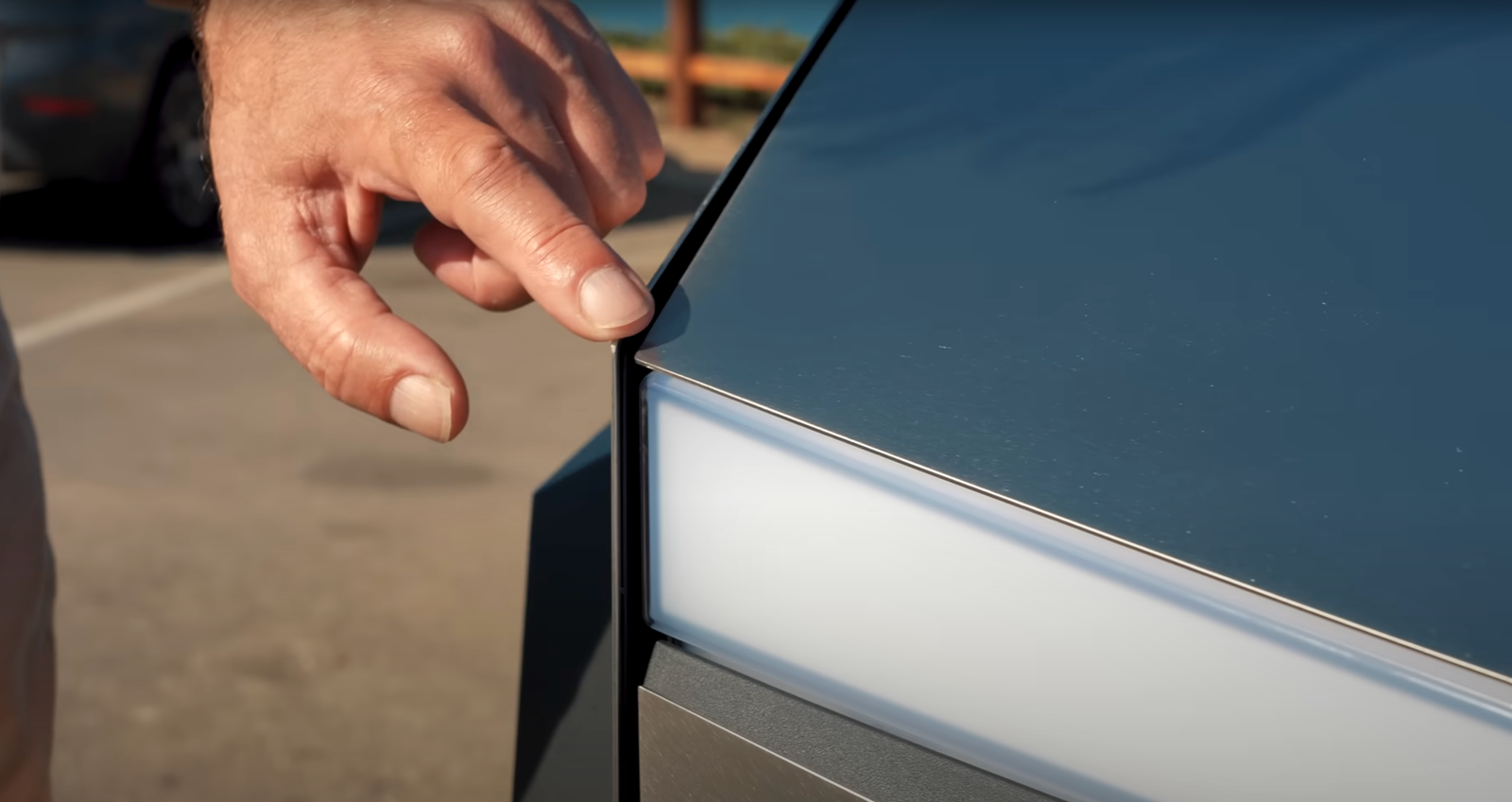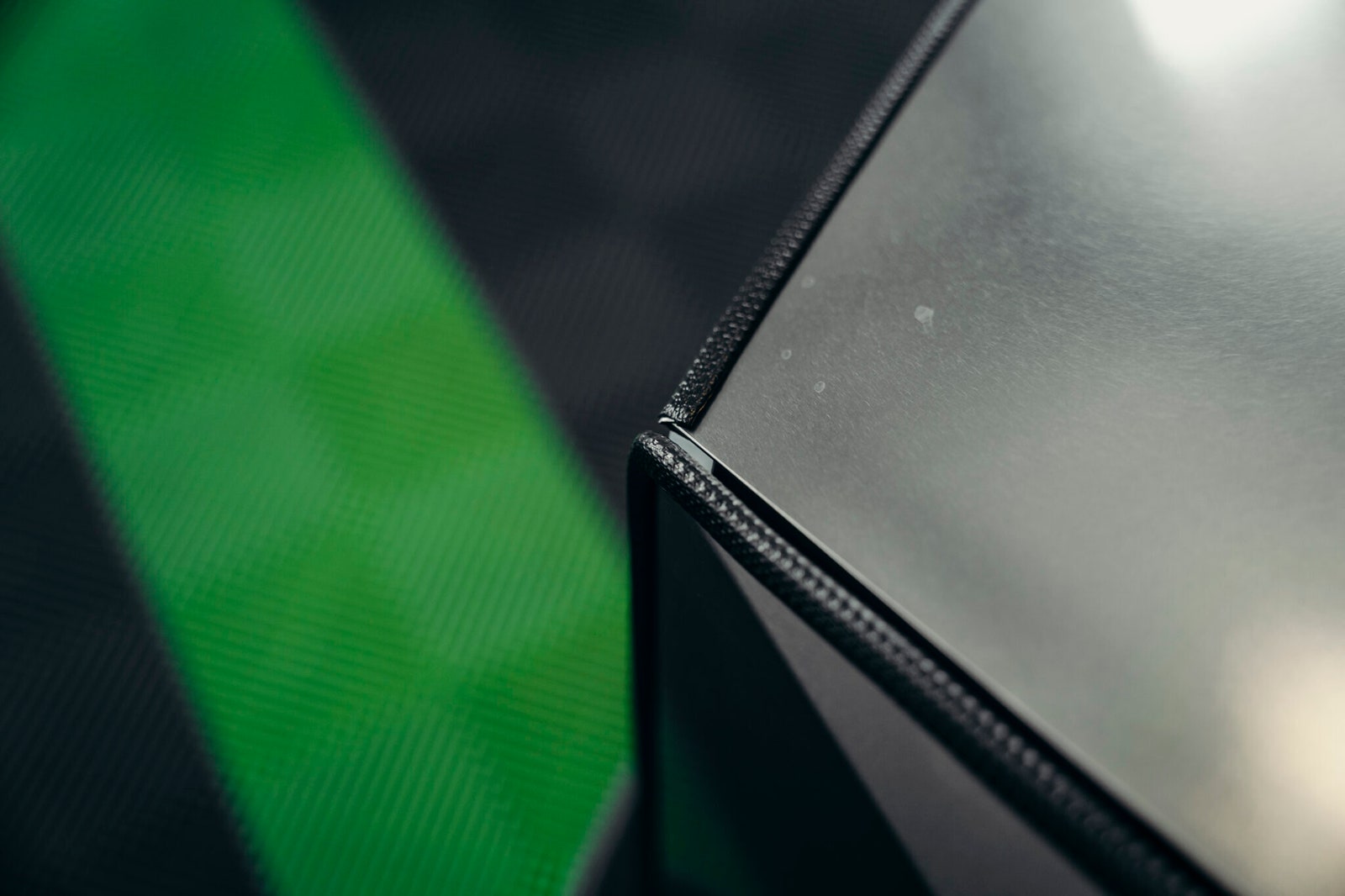The European New Car Assessment Programme (Euro NCAP) has not yet measured, prodded, weighed, or smashed a Tesla Cybertruck—or checked whether pedestrians could survive a hit from this angular beast—but Elon Musk’s electric pickup truck might potentially score poorly on the tests anyway.
“Based only on the car’s visual appearance, there are several aspects of this vehicle that look like they may be a threat to pedestrians,” claims Euro NCAP’s director of strategic development, Matthew Avery. “You cannot fail Euro NCAP,” he adds, “but you can get a bad score.”
It isn’t a legal requirement for cars to have a Euro NCAP test, but a low score is more than just a badge of dishonor, it’s a turnoff for consumers who tend to balk at buying cars that scrimp on safety.
The Euro NCAP was introduced in 1997. It provided unbiased advice on which cars were potential coffins, compared to which ought to crumple in the right places to protect the occupants. Pedestrian protection, or lack thereof, was also evaluated from the get-go.
Until recently there has been a woeful lack of focus in the US on similar pedestrian protection from automobiles. Earlier this month, however, the National Highway Traffic Safety Administration (NHTSA) unveiled the first rule that would limit the risk of pedestrian head injuries in a collision.
Europe’s tougher regulations make for safer cars, for those inside and out. Designed to test how safe a car is in a crash, Euro NCAP instantly cut through automakers’ safety claims with rigorous independent testing, hard facts, and an easy-to-understand five-star rating system.
It’s hard to sell a car in the EU with anything less than a four- or five-star rating. Nevertheless, even vehicles that score zero can go on sale and be perfectly legal to buy. For example, the budget Dacia Spring EV we recently reviewed costs an attractive $19,000, if it were to be sold in the US, yet that low price impacts the vehicle’s safety, resulting in a poor 1-star NCAP rating.
Still, it takes a particular kind of customer to buy a car knowing it has a low-star safety rating for the occupants and potential Mad-Max-style lethality to those outside the vehicle. The kind of customer who would buy a Cybertruck?
At least one Cybertruck has been seen driving around cities in the Czech Republic, an EU member, with a group of transport nongovernmental organizations (NGOs) warning that Musk’s polarizing EV with a troubled development history is too bulky and sharp to be allowed on European roads.
“The approval and registration of Cybertrucks in the EU poses illegal risks to all other road users,” states an open letter from the NGOs to the European Commission and national vehicle authorities across Europe.
“The small number of Cybertrucks registered so far in the EU need to be de-registered, with the relevant Member States confirming their removal from public roads,” continues the letter, signed by the leaders of, among others, the European Transport Safety Council, the International Federation of Pedestrians, and the European Cyclists’ Federation.
“Very oversized pickup trucks [are] now being increasingly imported and bringing danger to our streets,” warned James Nix of the nonprofit Transport & Environment, one of the other organizations that signed the open letter, which cites the US consumer advocacy nonprofit group Center for Auto Safety’s conclusion that compares the EV’s potential to harm pedestrians to “a guided missile.”
EU motor directives prohibit sharp edges on cars. The Cybertruck imported into the Czech Republic is fitted with worryingly slender rubber pads in an attempt to blunt these edges.
Referencing this modification, the open letter states that: “During the registration process, Czech authorities required ultra-narrow rubber slats to be retrofitted to [the] Cybertruck approved in early July. Such a retrofitting process would not meet EU rules prohibiting sharp edges in the first place.”
In a recent YouTube review of the Cybertruck, former Top Gear and Grand Tour presenter James May openly criticized the Cybertruck’s sharp edges, pointing at the front corner of his test electric vehicle, saying: “I mean, look at that. I wouldn’t want to be hit by it. I wouldn’t want to be hit by any car, but especially not that one, because, well, it’s a corner. You don’t get corners on the fronts of cars normally, but you do there.”
The EU motor directives also require speed limiters on vehicles that weigh more than 3.5 metric tons when full. Tesla’s manual lists the steel vehicle as having a gross vehicle weight of 4 metric tons.
“Since it’s not destined for Europe … we wouldn’t test [the Cybertruck],” states Euro NCAP’s Avery. He adds that another stumbling block is that the Cybertruck has no “type approval.”
EU type approval means confirmation that production samples of design meet specified performance standards set by the European Commission’s automotive directives.
Imported cars can be registered through an “individual vehicle approval” that subjects them to less scrutiny than a standard type approval. Member State approval authorities, responsible for checking motor vehicles before they go on sale, have wiggle room to deviate from EU rules in individual cases if they impose alternative requirements.
However, in its open letter, the group of NGOs stated that the owner-importer of the Cybertruck attempted to classify this import as a light-duty vehicle under EU law.
The letter asks the Czech transport ministry to point to a legal basis allowing the maximum weight of the vehicle, as declared by the vehicle maker and imprinted on the Vehicle Identification Number (VIN) plate, to be disregarded in favor of a figure approximately half a ton less, thereby conveniently matching the EU weight limit for light-duty vehicles.
“Were we to see mass private importation or something that gets around type approval we may consider a one-off [testing of a Cybertruck],” says Avery.
“For a car to be ‘pedestrian-friendly’ it needs to have energy-absorbing structures and harmonious front ends, essentially flat with no protrusions like bumper steps,” he adds.
“We test a vehicle with head and leg forms that represent human structures. We aim these at key areas on the car that we know would be injurious—so a lower leg is aimed at the bumper area.”
“It looks like the step [on a Cybertruck] might create bending moments that could be injurious. We have an upper leg that is fired at the bonnet edge. Again, you would want energy-absorbing structures without protrusion. I can see the exaggerated corner and the general stiffness of the [Cybertruck’s] stainless steel compromising this.”
The Cybertruck’s hood would also need to flex, and there should be no protrusions to gain a good NCAP pedestrian safety score.
“The [Cybertruck’s] large wiper and boss would be a danger area,” predicts Avery.
According to the transport NGOs, the modified Cybertruck was registered in the Czech Republic in July. The Czech Republic’s system of Individual Vehicle Approval was used to register it. The Czech transport ministry said all vehicles in the N1 category, in which the truck was registered, have weight ratios calculated from formulas in EU regulation from 2018. But the vehicle data it provided shows the Cybertruck does not satisfy the formulas when carrying four passengers.
For it to be driven legally in Europe, a Cybertruck customer would need to have a category C license. This is a truck license and is meant for driving vehicles that have a gross vehicle weight rating (GVWR) of more than 3.5 metric tons, or 7,716 lbs.
Norton Slovak, the cofounder of Cybertruck.cz, the company that owns the imported Tesla truck, told The Guardian he was aware of the discrepancy between the vehicle weight and the regulation, but that the “calculations may not fully reflect how these regulations are applied or interpreted by Czech authorities.”
The Czech transport ministry did not see the discrepancy as an issue because the registration was “individual approval of a vehicle from the national scope only on the territory of the Czech Republic” and not a type approval for the EU as a whole.
However, the truck, which the owners rent out for advertising campaigns, has already been driven to other EU member states including Slovakia, where on an Instagram post you can see the company testing “Wade Mode” on the Cybertruck in a lake near Bratislava. Things do not go to plan, and the all-terrain EV gets stuck in the water requiring passersby to help push it out and place boards under the wheels.
Tesla, Norton Slovak, and the Ministry of Transport of the Czech Republic were all contacted for this piece, but none responded.
In their open letter, the transport NGOs argue that if the European Commission fails to act, the importation of this single, rubber-edged Cybertruck could lead to the “mass import of Cybertrucks into Europe,” which, they say, would prove a danger to pedestrians, cyclists, and those motorists not in similarly armored motor vehicles. Euro NCAP seems to agree with that conclusion.
Source : Wired














